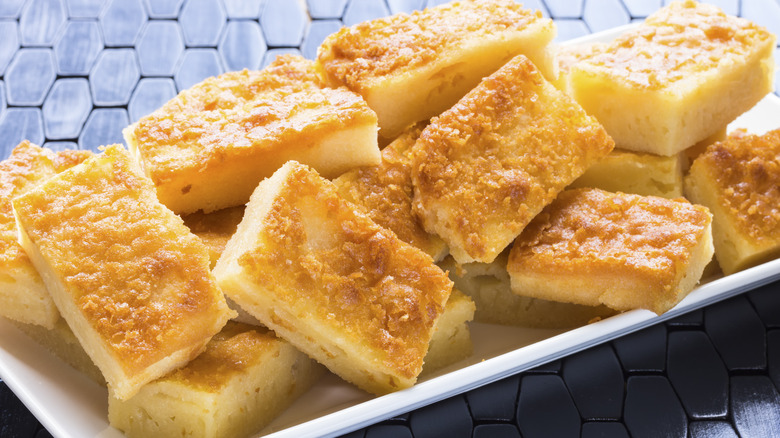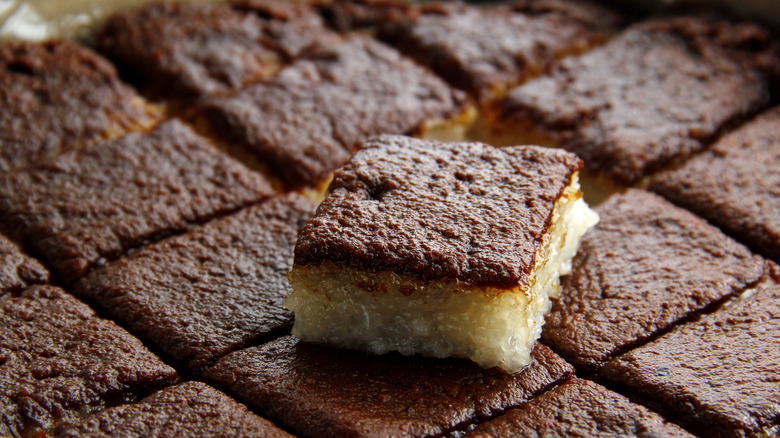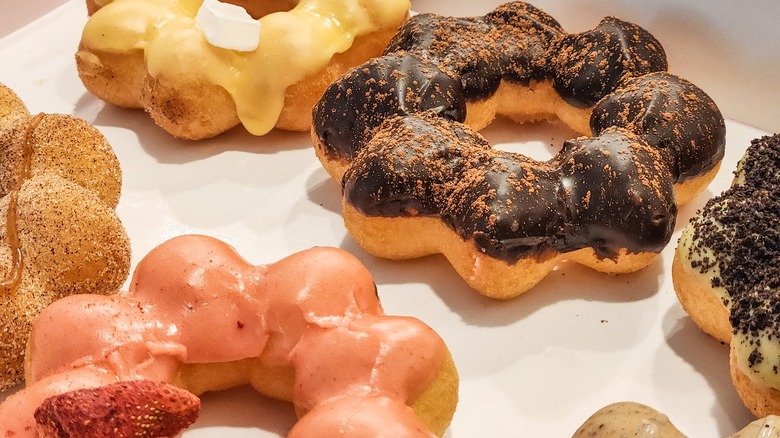What Exactly Is Butter Mochi?
Are you looking to impress your friends with a surprising dessert that's simple to make, not too sweet, and satisfyingly squishy? Well, look no further than butter mochi! This soft and bouncy baked good is a staple of bakeries across Hawaii and represents the many cultural influences that have shaped the cuisine of the Aloha State.
In essence, butter mochi could be described as a cross between coconut cake and Japanese mochi. It's baked, not steamed, making it more cake-like than traditional mochi, but with a chewier sponge than your typical cake. It has a subtle flavor, which comes primarily from a blend of unsweetened coconut milk, vanilla extract, evaporated milk, and butter. But what sets butter mochi apart from your typical sponge cake is the use of a very special ingredient: mochiko flour, also known as glutinous rice flour or sweet rice flour. Baking with glutinous rice flour doesn't yield a fluffy cake, but rather a deliciously chewy texture that's still soft and springy, yet easy to slice up into individual-sized portions, making it a great dessert to bring to parties.
The history of butter mochi
Like many origin stories, the history of butter mochi and how it became one of Hawaii's most popular treats, is tough to get straight. Based on its name, one would assume that butter mochi is inspired by the culinary traditions of Japan. But this isn't quite the case.
Although it shares many similar textural qualities of Japanese mochi, the spongy dessert is actually more similar to Filipino bibingka, a baked rice cake that's made with coconut milk. It may also be a distant cousin of cassava cake, another popular baked good from the Philippines that has a springy texture similar to butter mochi. However, based on available information, it is most likely that butter mochi is a strictly Hawaiian invention, the result of generations of culinary diffusion from Filipino, Portuguese, Japanese, and Korean cuisines. According to reporting from the New York Times, recipes for butter mochi can be found across Hawaii in local cookbooks that date back generations.
Why glutinous rice flour?
Glutinous rice flour is not the same product as ordinary rice flour. What makes it special is that it's made from long-grain or short-grain glutinous (or sticky) rice that has been cooked and dried, before being pulverized into a flour. Glutinous rice flour (also called sweet rice flour) is used to make dim sum, breads, donuts, and desserts — like butter mochi — because of its resulting chewy texture and slightly sweet finish. Traditional rice flour is similar to glutinous rice flour except that it's made from a different type of rice (typically a white or brown long-grain variety). It's not sweet and is often used as a thickening agent in soups, stews, and gravies, or as a gluten-free replacement for wheat flour.
As a home cook, you can easily use glutinous rice flour to create fun-textured pancakes, donuts, noodles, dumplings, muffins, and moon cakes. In China, glutinous rice flour is used to make hundreds of different baked goods, including jiandui (sesame balls), which are typically filled with a black sesame or red bean filling and then fried. In the Philippines, it's the primary ingredient in biko, a sticky rice cake. For something a little different, make some mochi and throw it on the grill!


